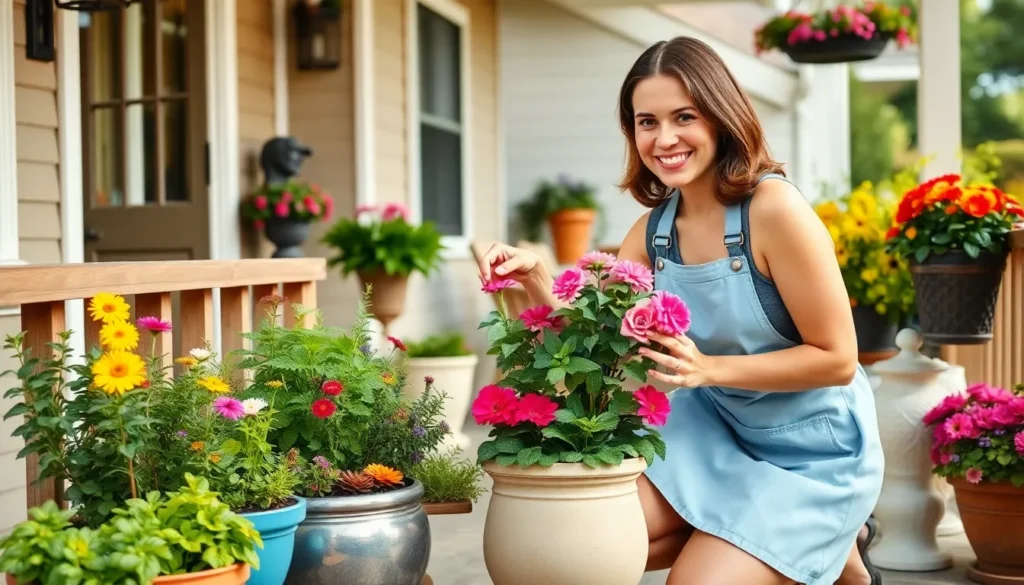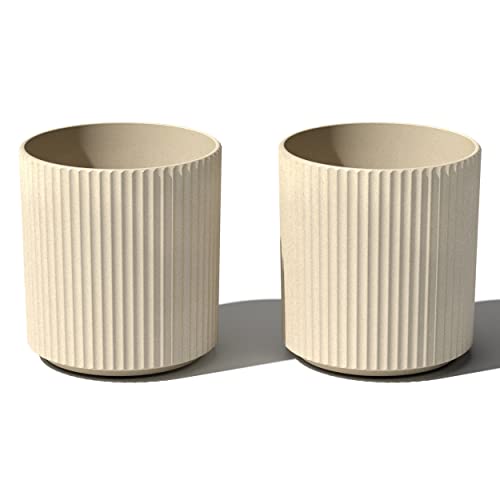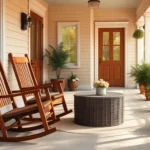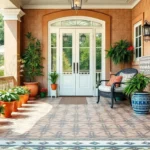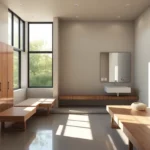Transform your front porch into a stunning welcome space that makes every guest stop and admire before they even ring the doorbell. We’ve discovered that the right planters can completely revolutionize your home’s curb appeal while creating an inviting atmosphere that reflects your personal style.
Whether you’re working with a sprawling wraparound porch or a cozy apartment stoop we’ll show you how to maximize every square inch with creative planter arrangements. From cascading flower displays to structured herb gardens and seasonal showstoppers there’s a perfect solution waiting for your space.
The best part? You don’t need a green thumb or a massive budget to achieve these gorgeous looks. We’ve curated practical ideas that work for beginners and experienced gardeners alike. Get ready to create the front porch of your dreams with planters that’ll have your neighbors asking for your secret.
Choose the Perfect Planter Size for Your Front Porch Space
Selecting the right planter size transforms your front porch from ordinary to extraordinary. We’ll guide you through the optimal dimensions for every porch layout so your planters complement rather than overwhelm your space.
Small Space Answers for Narrow Porches
Compact planters maximize visual impact without crowding tight spaces. We recommend 12 to 18 inch diameter containers for narrow porches under 4 feet wide. Wall mounted planters like rail boxes or hanging baskets create vertical interest while preserving precious floor space.
Tiered plant stands unlock creative possibilities in cramped quarters. Three tier stands measuring 24 inches wide fit perfectly against porch walls while displaying multiple plants. Corner planters with triangular bases use overlooked nooks that standard round containers can’t access.
Window box style planters stretch horizontally along porch railings without protruding into walkways. Choose boxes between 24 to 36 inches long and 6 to 8 inches deep for optimal plant root development. These slim profiles work beautifully with trailing flowers like petunias or cascading herbs.
Medium Planters for Standard Porch Dimensions
Standard sized planters between 18 to 24 inches create balanced proportions for typical front porches. We suggest pairing two matching medium planters on either side of your front door for classic symmetry. Rectangular planters measuring 20 by 12 inches provide ample growing space while maintaining manageable weight.
Elevated planters on decorative stands add height variation to medium porch layouts. Plant stands ranging from 12 to 18 inches tall create ever-changing visual layers without blocking sightlines. Round planters with 20 inch diameters work exceptionally well on stands for showcasing statement plants like boxwood topiaries.
Groupings of three medium planters form attractive clusters that draw the eye naturally. Arrange containers in odd numbered groups with varying heights using 18, 20, and 22 inch diameter pots. This technique creates professional looking displays that industry designers frequently employ.
Large Statement Planters for Spacious Entryways
Oversized planters measuring 24 to 36 inches make bold focal points on expansive porches. We position these substantial containers strategically near entrance doors or porch corners where they won’t impede foot traffic. Large planters accommodate small trees like dwarf citrus or ornamental maples that provide year round structure.
Matching pairs of large planters frame grand entrances with impressive scale. Select containers between 30 to 36 inches for porches exceeding 8 feet in width. These substantial planters support dramatic plantings like ornamental grasses or flowering shrubs that create resort style ambiance.
Custom built planter boxes integrate seamlessly with porch architecture on luxury properties. Built in planters measuring 4 to 6 feet long become permanent industry features that increase home value. Consider incorporating drainage systems and irrigation lines during construction for low maintenance gardening success.
Select the Right Materials for Durability and Style
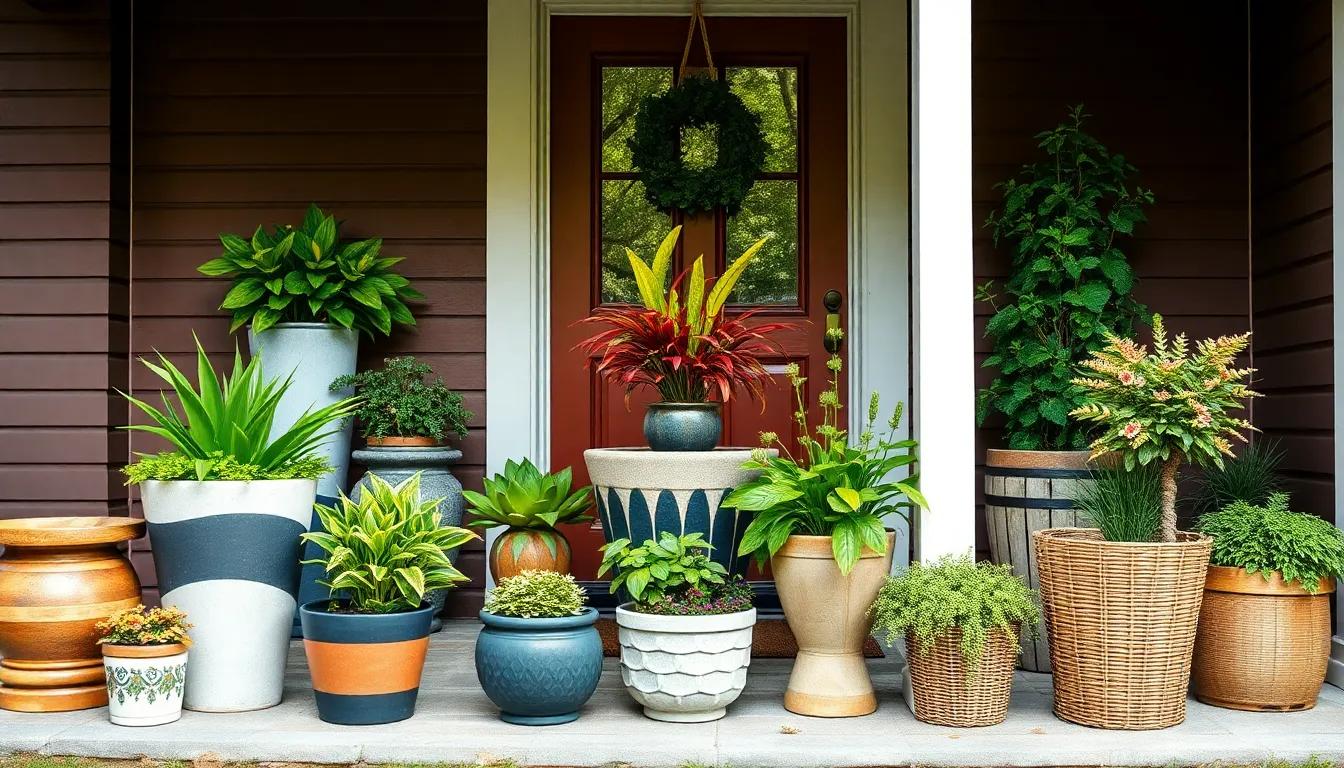
Now that we’ve found the perfect planter size for our front porch, let’s explore the best materials to ensure our planters look stunning and last for years to come.
Weather-Resistant Ceramic and Terra Cotta Options
Ceramic planters offer us a perfect blend of classic beauty and long-lasting performance. These porous materials allow excellent airflow and moisture regulation, keeping our plants healthy while adding timeless appeal to our porch design. Terra cotta brings that traditional Mediterranean charm we love, though it’ll need sealing for frost protection in colder climates.
Glazed ceramic planters give us enhanced durability with beautiful color options and varied textures. We can choose from many shapes and finishes that complement both rustic farmhouse and elegant contemporary styles. These weather-resistant options maintain their appearance season after season, making them a smart investment for our front porch displays.
Modern Metal and Concrete Planter Designs
Metal planters in sleek steel or aluminum deliver contemporary elegance with surprisingly lightweight construction. These modern options feature clean lines that create striking visual impact, especially when treated with rustproof coatings for excellent weather resistance. We’ll find them perfect for creating sophisticated arrangements with architectural plants.
Concrete planters bring industrial strength and minimalist style to our front porch designs. Their substantial presence works wonderfully as statement pieces, holding soil moisture longer than other materials, which makes them ideal for warm season plants like coneflowers and sun loving blooms. We can layer different plant heights to create dramatic displays that showcase the planter’s bold design.
Natural Wood and Wicker Planter Choices
Wood planters add natural warmth that beautifully complements our greenery and porch architecture. We have options ranging from rustic reclaimed wood to finely crafted cedar or teak that naturally resist decay and insects. These relatively lightweight materials blend seamlessly with any planting scheme while requiring periodic weatherproofing treatment.
Wicker planters introduce casual cottage charm with their distinctive texture and relaxed appeal. They typically need protective liners to prevent soil and moisture damage, but their versatility makes them worth the extra care. Both wood and wicker materials create that inviting, homey atmosphere we want our front porch to convey.
Create Stunning Seasonal Plant Combinations
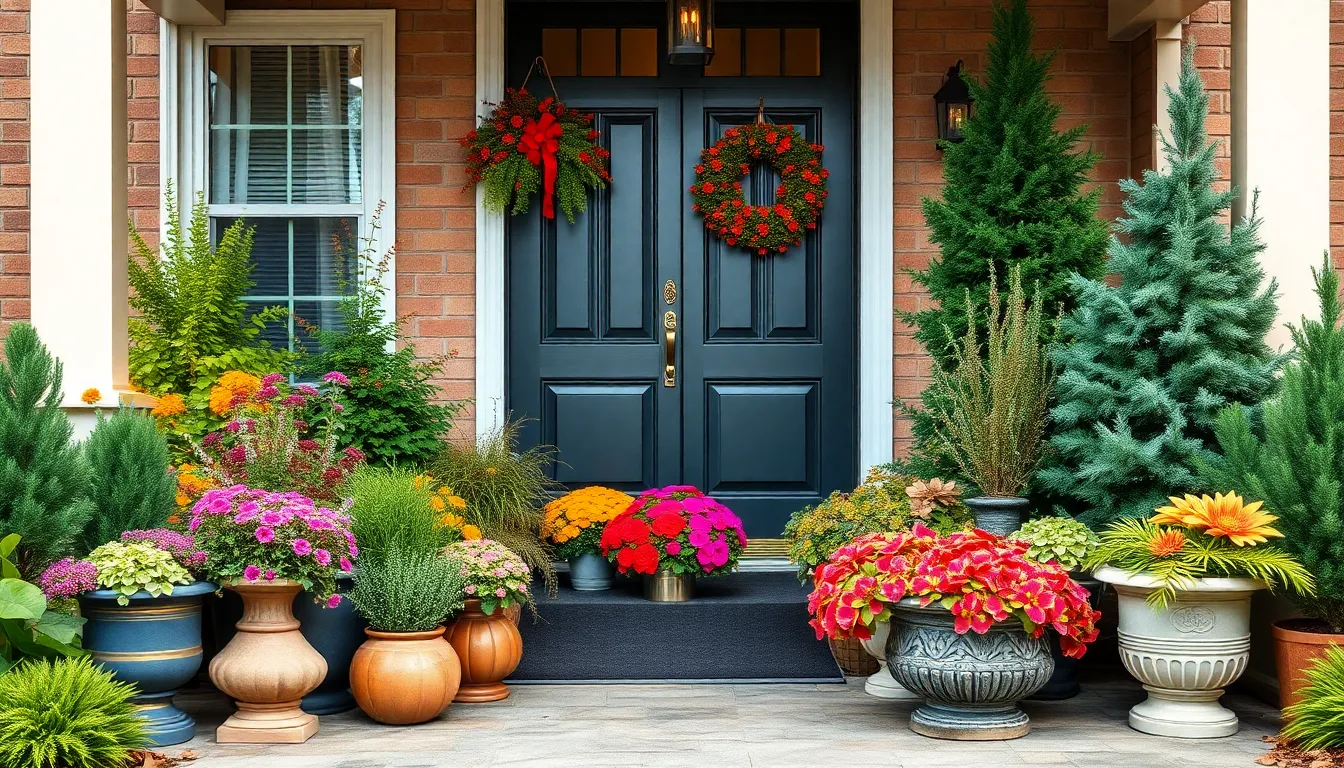
We’ll transform your front porch into a year-round showstopper by rotating seasonal plant combinations that capture each season’s unique beauty. Our strategic approach ensures continuous color and visual interest while maintaining the perfect balance of textures and heights.
Spring Blooms and Fresh Green Arrangements
Spring arrangements thrive with cool-weather flowers that create vibrant displays during mild temperatures. Trailing pansies cascade beautifully from containers while providing rich purple and yellow blooms that complement lime-colored heuchera’s striking foliage. Tulips add vertical interest with their bold colors, though we recommend planning replacements with heat-loving annuals once they fade for continuous seasonal impact.
Variegated ivy creates excellent spillover effects that soften container edges while adding year-round structure to spring displays. Perennial plants mixed into these arrangements establish lasting foundations that return each year with fresh spring growth. We’ve found that combining these cool-weather favorites creates the perfect fresh look that welcomes warmer weather ahead.
Summer Heat-Tolerant Colorful Displays
Summer planters demand heat-tolerant varieties that maintain vibrant colors even though intense sun and humidity. Lantanas deliver continuous blooms from late spring through fall while requiring minimal water, making them perfect anchor plants for summer containers. Coneflowers provide sturdy vertical elements with their daisy-like blooms that attract beneficial pollinators to your front porch.
SunPatiens excel in both sun and shade conditions, thriving in summer heat while producing striking orange petals and colorful foliage that creates dramatic focal points. Foxtail asparagus fern adds bright green texture that contrasts beautifully with flowering plants, while pothos provides trailing elements that cascade elegantly from container edges. These combinations ensure your summer displays remain stunning throughout the hottest months.
Fall Foliage and Harvest-Themed Plantings
Fall containers embrace warm color palettes featuring yellow, orange, and red hues that mirror autumn’s natural beauty. ‘Cheyenne Spirit’ coneflowers provide lasting blooms in sunset colors while adding substantial height to seasonal arrangements. Autumn ferns contribute rich bronze and copper tones that complement flowering plants beautifully.
‘Gilded Sun’ roses deliver warm-toned blooms that extend the growing season while creating sophisticated focal points in fall displays. Traditional flowers mixed with warm-toned foliage plants achieve that perfect harvest-themed aesthetic we’re seeking. Small pumpkins and gourds incorporated alongside planted containers add festive touches that celebrate the season’s abundance.
Winter Evergreen and Holiday Decorations
Winter planters rely on evergreens and hardy plants that withstand cold temperatures while providing visual interest during dormant months. Winter heather (Erica carnea) blooms in stunning purple and magenta colors through late winter, supplying crucial food sources for pollinators when few other plants are flowering.
False holly (Osmanthus heterophyllus) features spiny patterned leaves that mimic traditional holly while producing fragrant white flowers followed by blue-black berries. Both plants remain hardy across various USDA zones, ensuring reliable performance regardless of your location’s winter severity. These evergreen combinations maintain holiday charm while providing year-round structure that supports seasonal decorations and lighting displays.
Design Eye-Catching Arrangements with Height and Texture
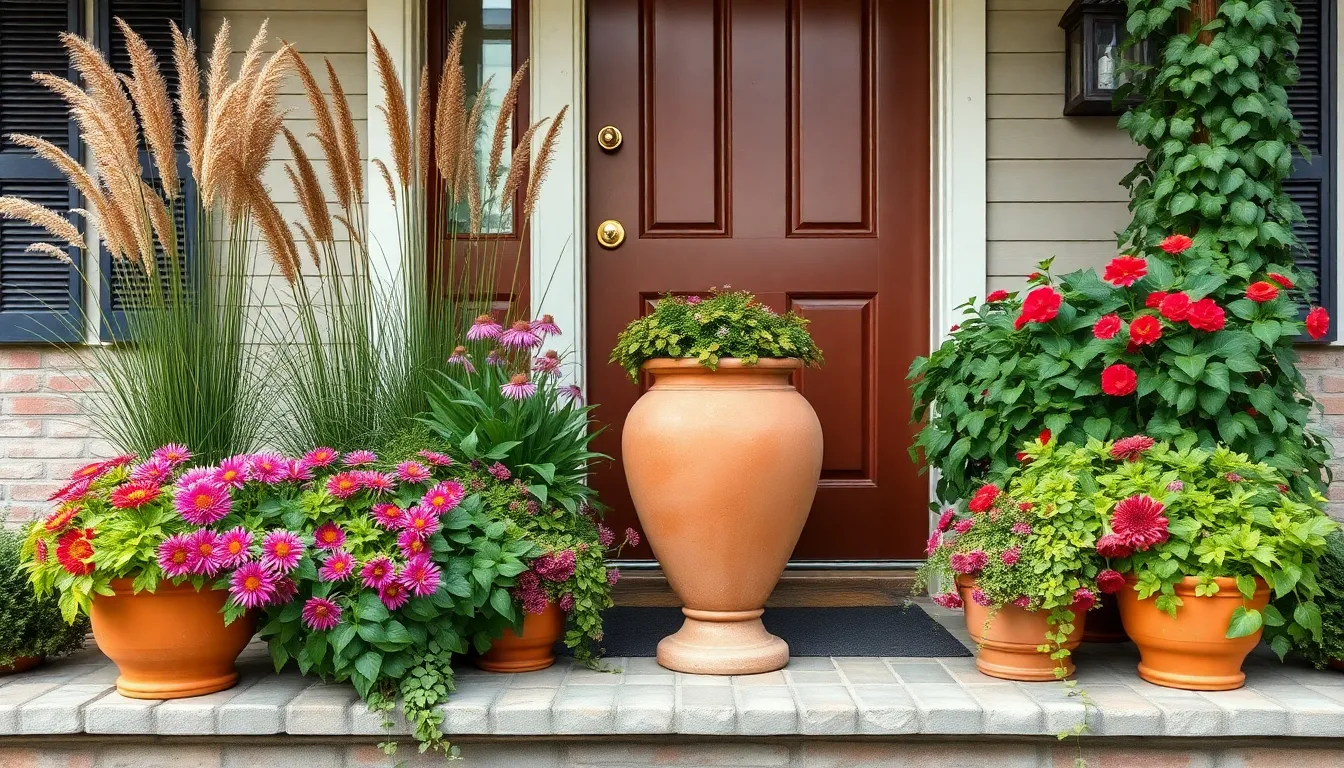
Creating planters with varying heights and rich textures transforms ordinary porch displays into captivating focal points. We’ll explore proven techniques that professional landscapers use to achieve stunning visual impact.
Layered Planting Techniques for Visual Interest
Layering plants by height creates natural depth that draws the eye upward and outward from your porch entrance. Start by placing tall structural plants in the back or center of your container, then fill the middle layer with medium-sized plants that add volume and color. Trailing varieties should cascade from the front edges to soften the overall arrangement and create graceful movement.
This technique replicates the organic feel of a natural garden bed within the confined space of a container. Position your tallest elements first, then work downward to establish a foundation that supports visual flow. Each layer should complement the others while maintaining its own distinct character and texture.
Mixing Tall, Medium, and Trailing Plant Varieties
Combining different plant sizes using the “thrillers, fillers, and spillers” approach ensures balanced arrangements that capture attention from every angle. Choose tall thrillers like ornamental grasses or ‘Alabama Crimson’ honeysuckles to provide dramatic vertical lines and structural backbone. Fill the middle space with colorful blooms such as ‘Cheyenne Spirit’ coneflowers or vibrant lantanas that add bulk and seasonal interest.
Trailing spillers like neon pothos or cascading ivy complete the composition by softening harsh container edges and adding flowing movement. Select plant varieties that match your porch’s light conditions, whether full sun or partial shade, to ensure healthy growth throughout the growing season. Balance is key when mixing these elements, with each category playing an equally important role in the overall design.
Adding Decorative Elements and Garden Accessories
Enhance your planter arrangements with carefully chosen decorative elements that complement rather than compete with your plants. Select containers with unique textures and colors, such as glazed ceramics for modern homes or weathered terracotta for rustic charm. Hanging baskets positioned at varying heights around your porch entry create additional layers and visual depth.
Garden accessories like small sculptures, decorative plant stakes, or vintage lanterns add personality without overwhelming the natural beauty of your plantings. Use a neutral color palette featuring white, silver, chartreuse, and deep purple for sophisticated cohesion, or incorporate bold accent colors for dramatic contrast. These finishing touches transform simple planters into professional-looking arrangements that enhance your home’s curb appeal year-round.
Incorporate Functional Herb and Vegetable Gardens
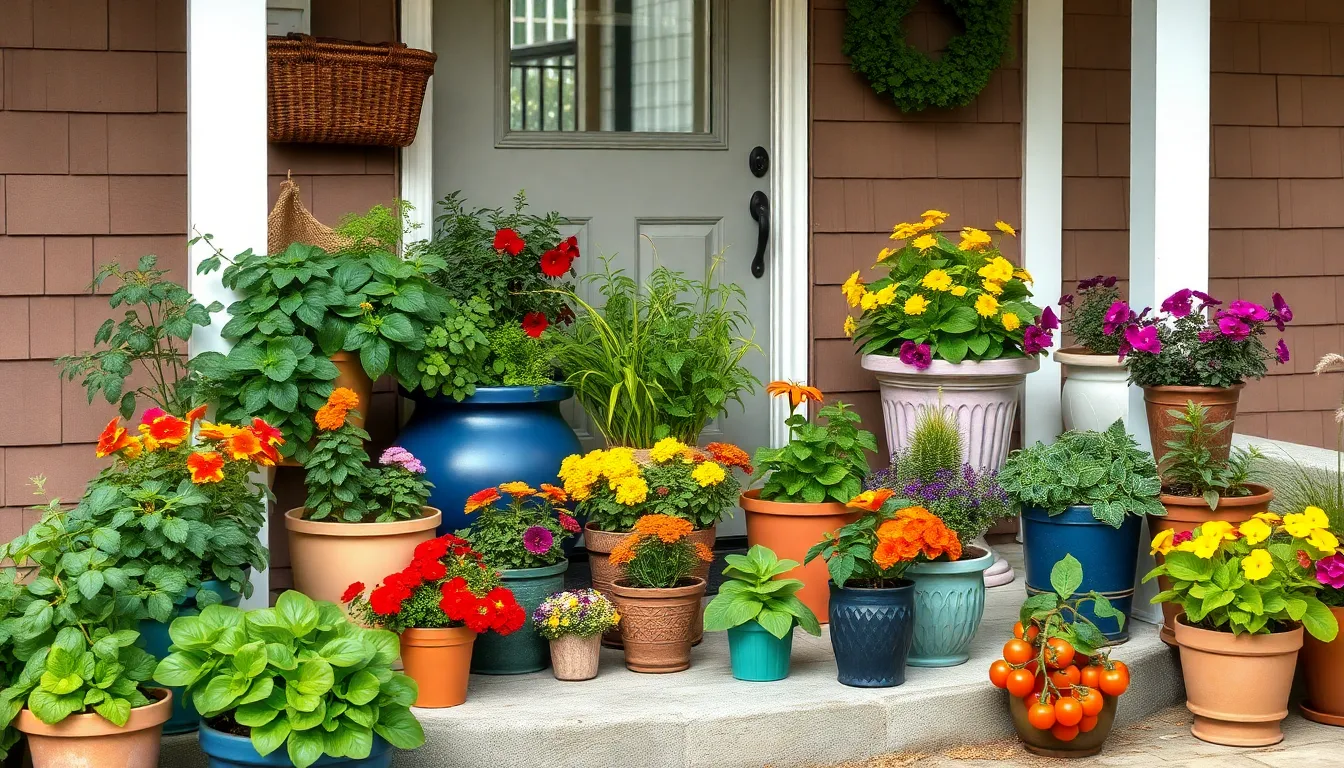
Transform your front porch into a productive garden space that combines beauty with practicality. We’ll explore how to grow fresh ingredients right at your doorstep while maintaining an attractive entrance.
Culinary Herb Planters for Everyday Cooking
Culinary herb planters make daily cooking more convenient and flavorful. Position these containers near your kitchen door for easy access when preparing meals. Popular choices include parsley, chives, oregano, and mint, which thrive in pots or vertical wall planters.
Group herbs with similar water and sunlight requirements to maximize growth efficiency. Basil and rosemary pair well together, while thyme and oregano share comparable growing conditions. Combine herbs with ornamental plants to create visually appealing and fragrant spaces that enhance your porch’s aesthetic value.
Choose containers that provide adequate drainage and root space for healthy herb development. We recommend medium-sized pots for individual herbs or larger planters for herb collections. Regular harvesting encourages continuous growth and ensures fresh ingredients throughout the growing season.
Compact Vegetable Gardens in Container Form
Compact vegetable gardens bring fresh produce directly to your front porch. Use medium to large pots for vegetables like lettuce, radishes, peppers, and bush beans that adapt well to container growing conditions. Cherry tomatoes particularly excel in porch planters and provide abundant harvests throughout summer months.
Select varieties specifically bred for container gardening to ensure optimal performance in limited spaces. Consider stacking or tiered planters to increase growing area without cluttering your porch layout. This vertical approach accommodates more plants while maintaining organized, attractive arrangements.
Plan seasonal rotations for continuous harvests throughout the year. Cool season crops like lettuce and radishes work well in spring and fall, while warm season vegetables thrive during summer months. We suggest choosing containers that allow good drainage and accommodate root systems for healthy plant development.
Edible Flower Combinations for Beauty and Function
Edible flower combinations transform functional gardens into stunning visual displays. Add nasturtiums, pansies, and calendula to your front porch planters for vibrant colors and unique flavors in cooking applications. These flowers garnish dishes and salads while providing exceptional ornamental value.
Mix edible flowers with herbs and vegetables to create multi-purpose garden spaces that serve both aesthetic and culinary purposes. Nasturtiums complement cherry tomatoes beautifully, while pansies pair well with lettuce and other leafy greens. Calendula adds bright orange and yellow accents that enhance any planter arrangement.
Choose flowers that tolerate your local climate conditions and complement existing plants for balanced, year-round appeal. We recommend selecting varieties with similar growing requirements to simplify maintenance routines. Position colorful blooms strategically to create focal points that draw attention while maintaining overall design harmony.
Position Planters for Maximum Curb Appeal Impact
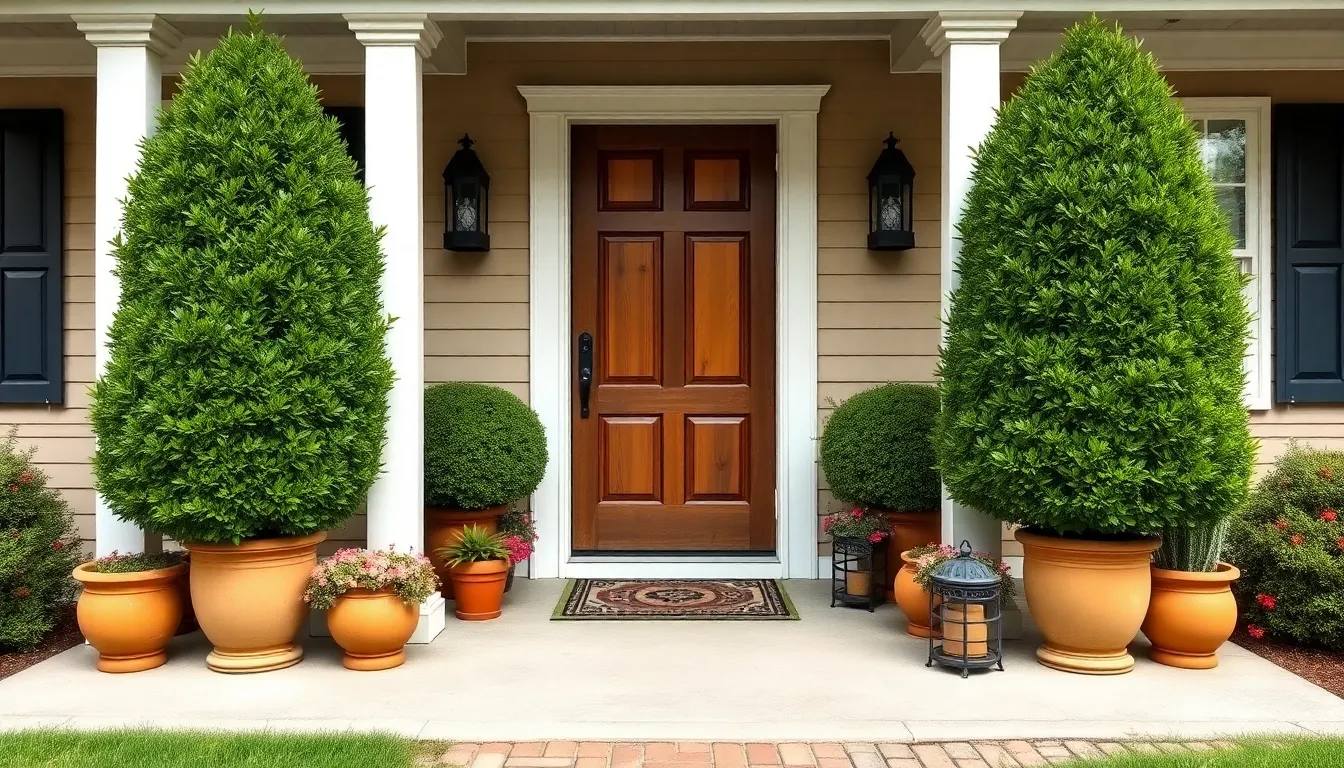
Strategic placement transforms ordinary planters into powerful curb appeal enhancers that welcome guests and create lasting first impressions. We’ll explore three proven arrangement styles that maximize visual impact while complementing your porch’s unique architecture.
Symmetrical Arrangements for Formal Front Porches
Symmetrical arrangements create sophisticated elegance that perfectly suits traditional or formal porches with defined architectural features. We recommend placing matching planters of identical height and plant variety on either side of your door or steps to achieve balanced framing that draws the eye naturally to your entrance.
Classic container shapes like round or square pots work best for maintaining the formal aesthetic you’re creating. Repeated color schemes reinforce the sense of order and refinement that makes symmetrical designs so appealing to visitors and passersby.
Plant selections for symmetrical arrangements often include structured varieties like boxwoods, hydrangeas, or neatly pruned topiaries that maintain their shape throughout the growing season. These choices ensure your formal display remains polished and sophisticated with minimal maintenance requirements.
Asymmetrical Groupings for Casual Cottage Style
Asymmetrical groupings deliver relaxed charm that’s perfect for creating an informal, welcoming atmosphere around your front entrance. We suggest clustering assorted pots of various sizes and shapes on one or both sides of your entry to achieve that coveted cottage garden look.
Mixing plant types and colors creates the lively, lived-in feel that makes cottage style so appealing to homeowners seeking a more casual approach. Rustic or weathered containers enhance this aesthetic while adding authentic character to your porch display.
Combining flowering annuals with herbs or small shrubs provides the texture contrast and personal touches that make asymmetrical arrangements feel uniquely yours. This approach allows you to experiment with different combinations throughout the seasons while maintaining that charming, effortless cottage appeal.
Corner and Step Placement Strategies
Corner placements offer ideal opportunities for larger planters that anchor your porch visually while softening sharp architectural angles. We position substantial containers in these spots to create natural focal points that guide visitors’ eyes around your entrance area.
Smaller pots work beautifully when placed directly on steps or staggered across multiple step levels for ever-changing layering effects. This technique creates color pops at varying heights that add visual interest and depth to your overall porch design.
Durable plant selections become crucial for these high-traffic areas where containers face reflected heat, wind exposure, and frequent foot traffic. Succulents and ornamental grasses thrive in these challenging microclimates while providing year-round structure and beauty to your step and corner arrangements.
Maintain Your Front Porch Planters Year-Round
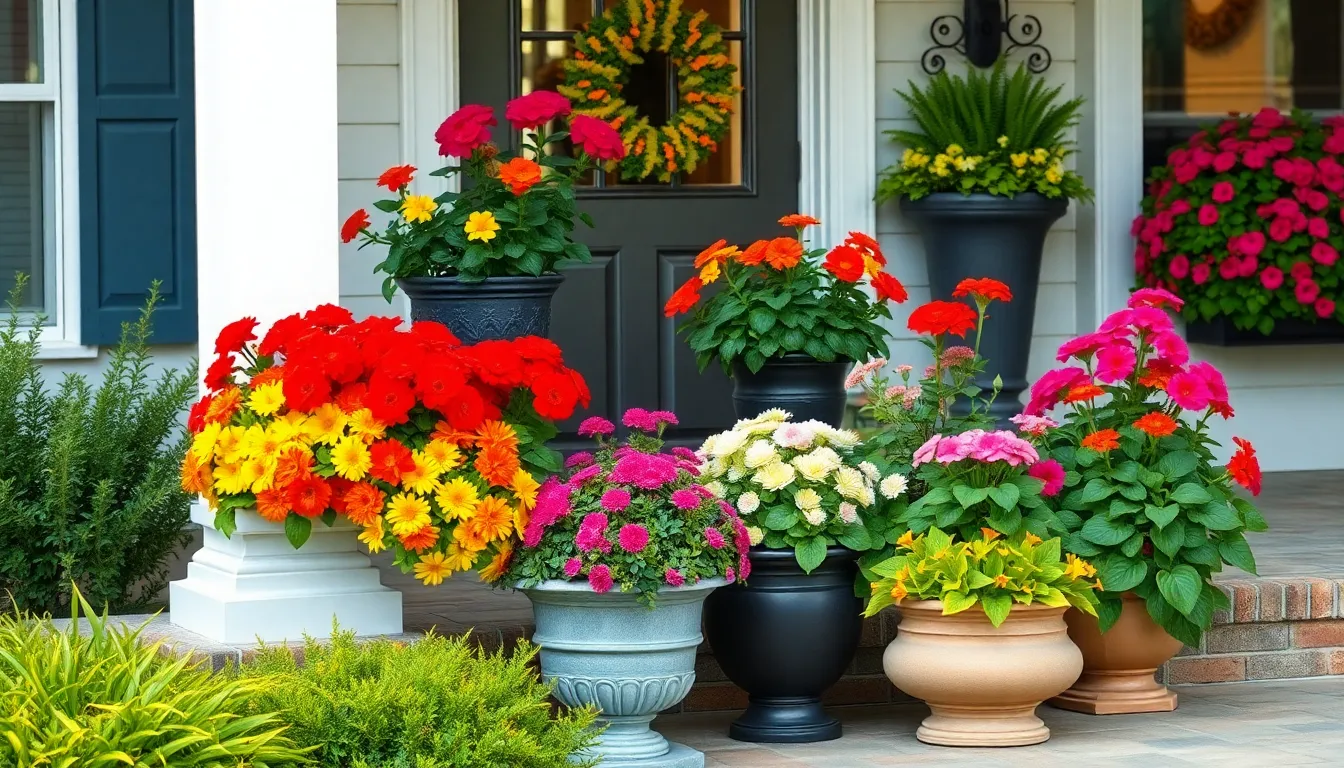
Successful front porch planters require consistent care and strategic maintenance throughout the seasons. We’ll guide you through the essential practices that keep your arrangements thriving and beautiful all year long.
Watering and Drainage Best Practices
Proper drainage forms the foundation of healthy planter care. We recommend ensuring every container includes drainage holes to prevent waterlogging that can damage plant roots. Excess water needs somewhere to escape, especially during rainy periods when natural precipitation adds to your watering routine.
Consistent watering schedules prevent both drought stress and root rot. We suggest checking soil moisture by inserting your finger about two inches deep into the potting mix. Allow the soil to dry slightly between watering sessions to maintain optimal root health and prevent fungal issues.
Seasonal adjustments keep your watering routine aligned with plant needs. During hot summer months, we increase watering frequency to compensate for rapid evaporation and active plant growth. Cooler periods require less frequent watering since plants consume less water and soil retains moisture longer.
Fertilizing and Pruning Maintenance Tips
Balanced, slow-release fertilizers provide steady nutrition throughout the growing season. We apply these fertilizers according to package directions, typically every 6-8 weeks during active growing periods. This approach eliminates the guesswork of frequent feeding while ensuring plants receive consistent nutrients.
Regular deadheading encourages continuous blooming in flowering plants. We remove spent blooms by pinching or cutting them off at the stem, which redirects the plant’s energy into producing new flowers rather than setting seeds. This simple practice extends the blooming period significantly.
Strategic pruning maintains plant shape and promotes healthy growth patterns. We trim back leggy growth on plants like lantanas and coneflowers to encourage bushier, more compact forms. Pruning also improves air circulation around plants, reducing the risk of fungal diseases.
Seasonal Plant Rotation and Care Schedule
Spring planting establishes the foundation for year-round color. We introduce warm-season flowers like lantanas and coneflowers as temperatures stabilize above 50°F consistently. Cool-weather plants such as pansies and tulips provide early spring interest before transitioning to heat-tolerant varieties.
Summer maintenance focuses on supporting active growth and managing heat stress. We increase watering frequency and may supplement with additional fertilization as plants reach peak growing season. Regular monitoring helps us identify any pest issues or nutrient deficiencies before they become serious problems.
Fall transitions prepare planters for cooler weather ahead. We incorporate autumn ferns and asters to maintain visual interest as summer annuals fade. This timing allows new plants to establish before winter while providing seamless color continuation.
Winter planning ensures year-round appeal with hardy plant selections. We replace tender annuals with evergreens or ornamental grasses that withstand freezing temperatures. These cold-hardy choices provide structure and visual interest even when other garden areas become dormant.
Conclusion
Your front porch represents the first impression guests have of your home and with the right planter combinations you can create a welcoming entrance that reflects your personal style. We’ve explored everything from material selection to seasonal arrangements that’ll keep your space looking fresh throughout the year.
The beauty of front porch planters lies in their versatility – whether you’re working with a compact apartment balcony or a spacious wraparound porch there’s always a solution that fits your space and budget. By combining functional herbs with decorative flowers or mixing different textures and heights you’re creating an outdoor display that’s both practical and stunning.
Remember that successful front porch gardening doesn’t require perfection from day one. Start with a few key pieces experiment with different plant combinations and let your porch evolve naturally as you discover what works best for your exact conditions and lifestyle.
Frequently Asked Questions
What size planters work best for small porches?
For narrow porches, compact planters, wall-mounted options, and tiered plant stands are ideal. These maximize visual impact without crowding the space. Consider vertical arrangements and hanging planters to draw the eye upward while keeping walkways clear and functional.
Which planter materials are most weather-resistant?
Ceramic, terra cotta, metal, and concrete planters offer excellent weather resistance. Glazed ceramic provides enhanced durability, while metal and concrete deliver contemporary style with industrial strength. These materials withstand seasonal changes and maintain their appearance over time.
How do I create seasonal planter displays?
Start with spring cool-weather flowers like pansies and tulips, transition to summer heat-tolerant plants like lantanas, incorporate fall warm colors with coneflowers and autumn ferns, then use evergreens and hardy plants for winter interest and holiday decorations.
What is the “thrillers, fillers, and spillers” planting technique?
This approach creates balanced arrangements using three plant types: “thrillers” (tall focal plants), “fillers” (medium plants for body), and “spillers” (cascading plants for edges). This layering technique adds depth and visual interest from every viewing angle.
Can I grow herbs and vegetables in front porch planters?
Yes! Use medium to large pots for herbs like parsley and mint, grouping those with similar water and sunlight needs. Compact vegetables like lettuce and cherry tomatoes work well. Consider seasonal rotations for continuous harvests while maintaining attractive displays.
How should I arrange planters for maximum curb appeal?
Use symmetrical arrangements for formal porches, asymmetrical groupings for casual cottage style, or strategic corner and step placement. Consider your porch style and traffic flow when positioning planters to create the most impactful and functional display.
What plants work best in high-traffic porch areas?
Succulents and ornamental grasses are excellent choices for high-traffic areas due to their resilience and low maintenance requirements. These hardy plants withstand foot traffic, varying weather conditions, and require minimal care while maintaining their attractive appearance.
How often should I water my porch planters?
Watering frequency depends on plant type, weather, and container size. Check soil moisture regularly—most planters need water when the top inch feels dry. Ensure proper drainage to prevent root rot, and adjust watering schedules seasonally based on temperature and rainfall.
When should I rotate seasonal plants in my planters?
Rotate plants at the beginning of each season: early spring for cool-weather flowers, late spring for summer plants, early fall for autumn displays, and late fall for winter arrangements. This ensures continuous blooming and maintains year-round visual appeal.
Do porch planters increase property value?
Well-designed planter displays significantly enhance curb appeal and can increase property value. Custom-built planter boxes that integrate with porch architecture are particularly effective, creating cohesive designs that improve both aesthetics and overall home presentation to potential buyers.

